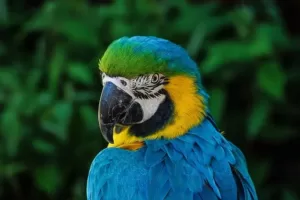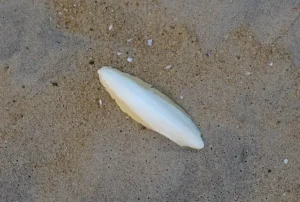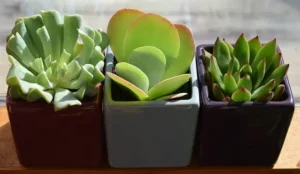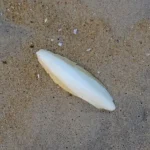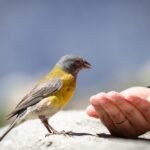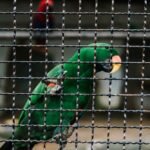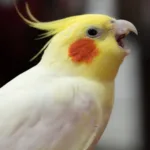For a long time olfactory sense of birds in general had been hugely underestimated. It’s only in recent years, that researchers have found evidence of the importance of sense of smell for birds.
Numerous studies have indicated that parrots do have a sense of smell. However, it is relatively weaker compared to their sight and hearing capabilities. Parrots don’t have many olfactory receptors and they generally rely on their sight to make crucial decisions.
Parrots do not rely on their olfactory senses as much as they do on their sight and hearing. This is because a parrot’s sense of smell is of less use when it comes to activities like foraging and avoiding predators.
Quick Navigation
Do Parrots Have a Sense of Smell?
Parrots have a functional olfactory system that helps them detect different odors. However, it is far less developed compared to their other senses. The reason for this is low biological and evolutionary significance.
In the wild, parrots primarily rely on their vision and hearing to navigate their surroundings, make foraging decisions, and communicate with their flock. Their preference for visual cues limits the evolutionary need for a highly developed sense of smell.
Parrots have an exceptional vision that enables them to see colors better than humans. Their vision helps them find and identify food as well as look out for potential threats in their habitat. Therefore, while parrots can detect some odors, they do not use this sense for survival or social interaction.
According to PLOS ONE, some parrots use olfaction to search for food. A prominent example of such a species is the flightless parrot, Kākāpō.
Research by JULIE C. HAGELIN, suggests that Kākāpōs use their sense of smell to identify food.
The researchers conducted an experiment to observe the olfactory behavior of Kakapo. The experiment involved providing the parrot with three bins, with only one containing food. Each night, the positions of the bins were changed to ensure the birds did not rely on smell to find the food.
This was repeated for 11 nights and the Kakapo parrot appeared to exhibit a specific behavioral sequence where it first opened the bin where the food had been placed the previous night, seemingly using memory.
Then, upon not finding food, it correctly opened the bin with food from the remaining two, appearing to rely on scent. These findings suggest that both memory and scent play significant roles in its foraging behavior.
Do Parrots Have Noses?
Parrots do not have noses like us, instead, they have nares. The nares are small openings that allow the parrot to breathe and also help in sensing odors. Nares are located on the upper part of their beak, which is called the cere.
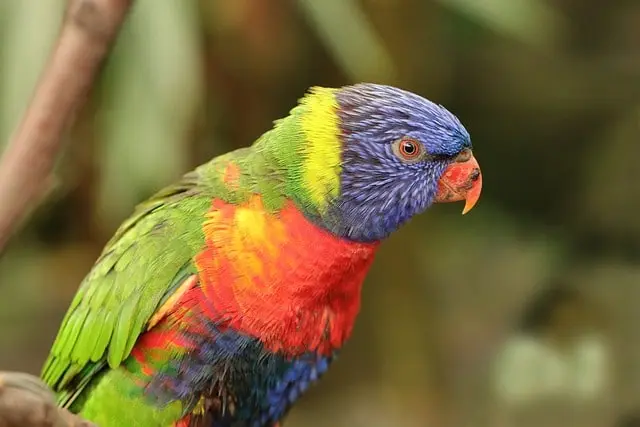
How Do Parrots Smell?
The avian olfactory system consists of different parts within the nasal cavity, which enable parrots to process odor in their environment. The olfactory system typically includes olfactory epithelium, olfactory nerves, and olfactory bulbs.
Parrots inhale air through their nares, which are located above their beaks. The air then travels through the nasal cavity, which comprises three chambers, which further carry the olfactory information to the brain.
The function of the first two chambers is primarily to deliver warm and moist air into the respiratory system. The third chamber is where the olfactory epithelium is located.
This epithelium contains olfactory receptors, which are connected to the olfactory nerves. The olfactory nerves are further connected to the olfactory bulbs which are located at the upper part of the nasal cavity. The olfactory bulbs carry the neural message to the brain where the odor information is processed.
The function of the olfactory system is the same across all parrot species. However, how well a parrot is able to smell depends on a number of anatomical factors. There are variations in the anatomical features of a parrot’s olfactory system, such as the complexity of the nasal cavity and the size of the olfactory bulb in relation to the total brain size.
Can Parrots Smell Food?
Parrots may not have the strongest sense of smell but they can smell their food. They do not generally sniff their food before eating because of the odd positioning of their nares. However, from a close distance, parrots can smell food.
Research from Integrative Zoology suggests that certain parrot species use their sense of smell to make foraging decisions.
The study conducted aimed to understand how certain bird species use their sense of smell, especially when searching for food. They conducted an experiment with five different bird species: Scarlet Macaws, Red-lored Amazons, Yellow-naped Amazons, Keel-billed Toucans, and Yellow-throated Toucans.
Each bird was presented with water, vinegar, papaya, and banana juice to test their sense of smell. The results showed that macaws and toucans were more interested in the fruit scents, suggesting that they could use smell to find ripe fruits. However, the Amazon parrots did not show the same interest in the fruit scents.
However, parrots are generally not attracted to the aroma of the food as much as they are to its color. As mentioned, parrots are visual creatures and are attracted by colors. They may find a food appetizing if it is visually appealing to them.
That being said, parrots often neglect food that has gone bad or has been out for a while. This may be due to the visual changes the food has undergone or because of its pungent smell. Rotten food can smell with a foul odor and a parrot’s nose may be able to pick that up. This combination of visual and olfactory cues helps the parrot in making decisions about what to consume and what not to.
Can Parrots Smell Humans?
Parrots may not actively try to smell humans, but studies show that they can register odors to remember individuals they interact with. Parrots can use their olfactory senses to recognize their owners and individual birds in their flock.
Do Parrots Use Scent To Attract Mates?
The scent is an important part of courtship in parrots. In order to woo the female parrots, male parrots engage in a number of courtship displays. Most of these displays are visual such as spreading their wings, fluffing their feathers, and showing their vibrant plumage.
However, the fragrance released by the preening oil acts as a strong courtship signal. Parrots use preening oil, which is secreted by the Uropygial or preen gland to groom the feathers. The fragrance of this oil is spread over their plumage, which indicates their reproductive health and readiness to mate.
How Far Can Parrots Smell?
It is not known how far parrots are capable of smelling. However, based on the empirical evidence, it can be assumed that they cannot smell very far odors since their olfactory sense is the poorest of all other senses.
If you test your own parrot’s sense of smell, you’ll find that they cannot detect the smell of food that’s kept far away. Most parrot species do not use scent for food preferences.
